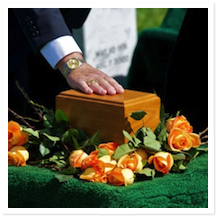 The cremation process has been around for thousands of years, but more individuals today choose to be cremated instead of buried once they die. What most of us think of as a traditional funeral and burial is in fact no more of a traditional practice than a cremation. Cremation is very popular in other parts of the world and is becoming increasingly popular in North America.
The cremation process has been around for thousands of years, but more individuals today choose to be cremated instead of buried once they die. What most of us think of as a traditional funeral and burial is in fact no more of a traditional practice than a cremation. Cremation is very popular in other parts of the world and is becoming increasingly popular in North America.
There are three steps that the deceased person has to go through during the cremation process. The first step is the preparation of the body, the second is the actual cremation and the final step is the processing of ashes.
1) Preparation of the Body
During the first step of the cremation process the funeral director will ask for an authorization document from the immediate family of the deceased person. Both the funeral home and a representative of the family sign this document. After the document is received, the funeral director removes items that may result in explosion or items that the family wants to keep such as jewelry. It is not essential to embalm the body before the cremation process, but if the body will be available for viewing during the memorial service, it must undergo embalming. After the body has been prepared it is placed in a wood casket. An identification tag is placed on the casket and body for proper identification of the cremated ashes.
2) Cremation
For the actual cremation process, the casket with the body of the deceased person is placed in a cremation chamber, which is also called a retort. The chamber is equipped with walls and a ceiling that are resistant to fire while the floor is crafted with a masonry compound that can survive high temperatures. After placing the body inside, the door is closed either by hand or an automated switch. The operator starts the machine, fueled with either natural gas or propane, and allows it to warm up to a temperature ranging from 1800 to 2100 degrees Fahrenheit. The cremation process normally lasts for 1 ½ to two hours.
3) Processing the Ashes
After the cremation process, the bone fragments of the burned body of the deceased are allowed to cool down for at least 30 minutes. These fragments are then removed from the chamber and are put in a table wherein debris including screws and titanium joints are eradicated by using either the hand or a magnet. Then the bone fragments are situated in a cylindrical container that grinds the fragments into fine powder. The fine powder, also known as the ashes are deposited in a plastic bag.
The funeral home will take the plastic bag with the ashes and place them inside a cremation urn and give that to the family. What many families do not realize is that they can request the ashes in the plastic bag and purchase an urn at a later date. This gives the family more time to decide what urn they would like to purchase for the deceased person.
